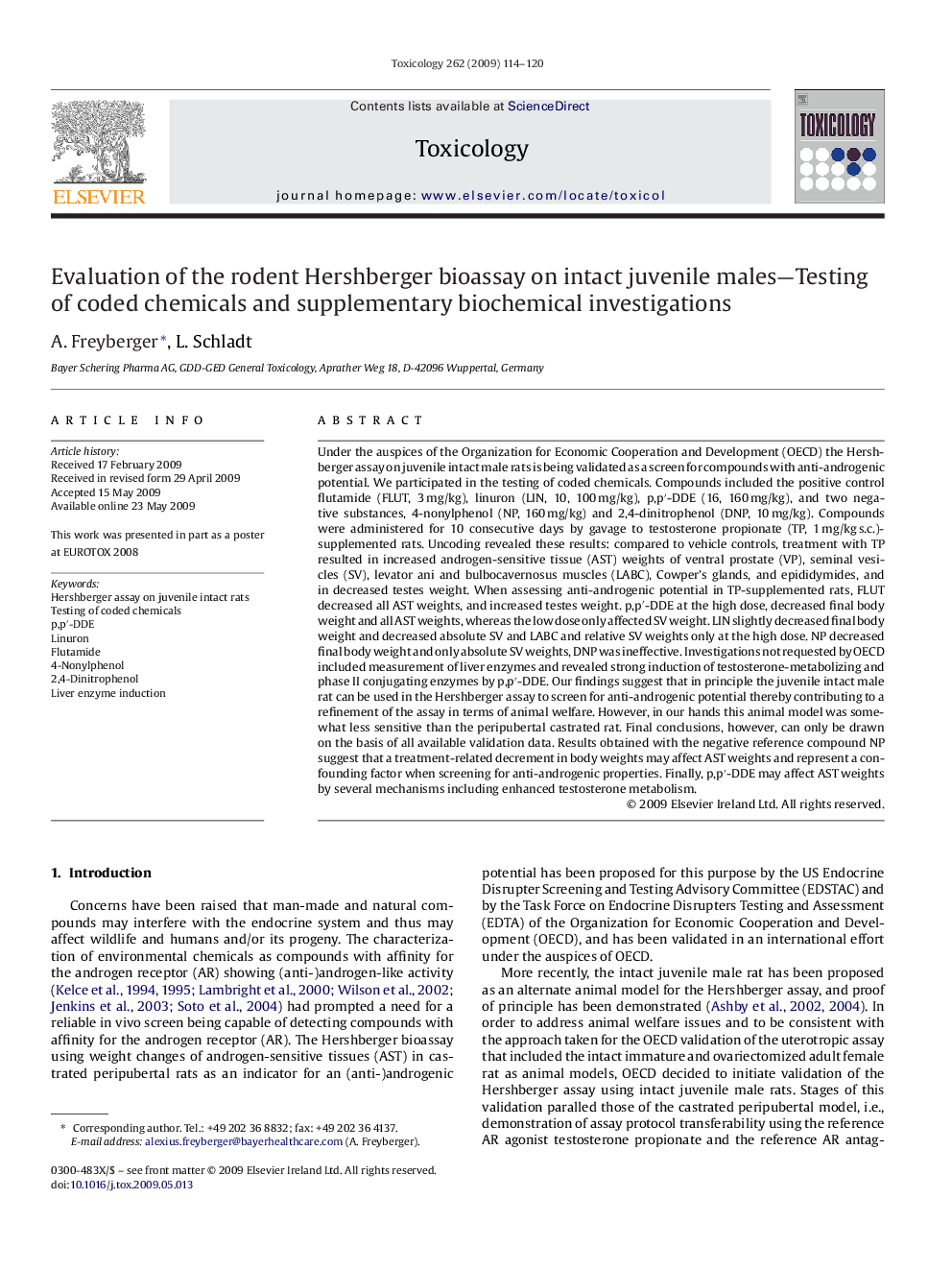| کد مقاله | کد نشریه | سال انتشار | مقاله انگلیسی | نسخه تمام متن |
|---|---|---|---|---|
| 2596755 | 1132547 | 2009 | 7 صفحه PDF | دانلود رایگان |

Under the auspices of the Organization for Economic Cooperation and Development (OECD) the Hershberger assay on juvenile intact male rats is being validated as a screen for compounds with anti-androgenic potential. We participated in the testing of coded chemicals. Compounds included the positive control flutamide (FLUT, 3 mg/kg), linuron (LIN, 10, 100 mg/kg), p,p′-DDE (16, 160 mg/kg), and two negative substances, 4-nonylphenol (NP, 160 mg/kg) and 2,4-dinitrophenol (DNP, 10 mg/kg). Compounds were administered for 10 consecutive days by gavage to testosterone propionate (TP, 1 mg/kg s.c.)-supplemented rats. Uncoding revealed these results: compared to vehicle controls, treatment with TP resulted in increased androgen-sensitive tissue (AST) weights of ventral prostate (VP), seminal vesicles (SV), levator ani and bulbocavernosus muscles (LABC), Cowper's glands, and epididymides, and in decreased testes weight. When assessing anti-androgenic potential in TP-supplemented rats, FLUT decreased all AST weights, and increased testes weight. p,p′-DDE at the high dose, decreased final body weight and all AST weights, whereas the low dose only affected SV weight. LIN slightly decreased final body weight and decreased absolute SV and LABC and relative SV weights only at the high dose. NP decreased final body weight and only absolute SV weights, DNP was ineffective. Investigations not requested by OECD included measurement of liver enzymes and revealed strong induction of testosterone-metabolizing and phase II conjugating enzymes by p,p′-DDE. Our findings suggest that in principle the juvenile intact male rat can be used in the Hershberger assay to screen for anti-androgenic potential thereby contributing to a refinement of the assay in terms of animal welfare. However, in our hands this animal model was somewhat less sensitive than the peripubertal castrated rat. Final conclusions, however, can only be drawn on the basis of all available validation data. Results obtained with the negative reference compound NP suggest that a treatment-related decrement in body weights may affect AST weights and represent a confounding factor when screening for anti-androgenic properties. Finally, p,p′-DDE may affect AST weights by several mechanisms including enhanced testosterone metabolism.
Journal: Toxicology - Volume 262, Issue 2, 3 August 2009, Pages 114–120